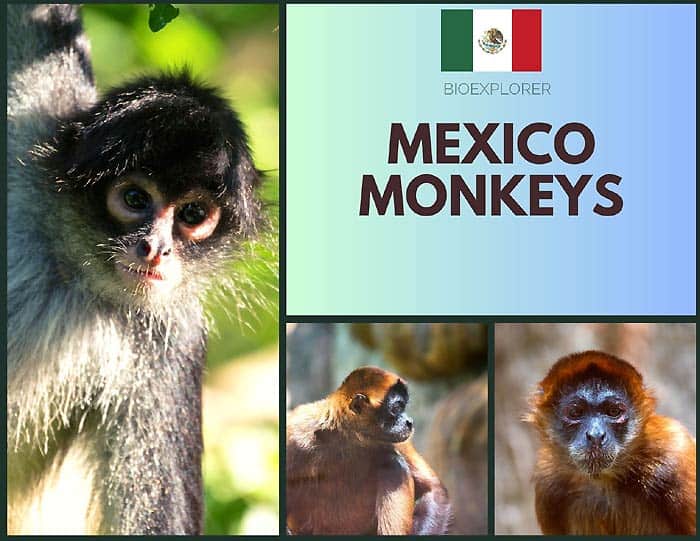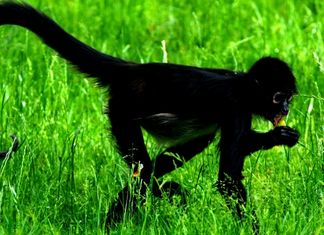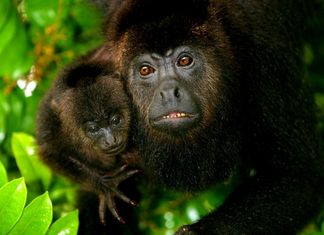
Mexico, a country celebrated for its rich biodiversity, boasts a remarkable array of unique species that inhabit its varied landscapes[1]. From the arid expanses of the Sonoran Desert in the north, the dense pine-oak forests of the Sierra Madre Mountain ranges, to the lush rainforests of the Lacandon Jungle in Chiapas and the vibrant coral reefs of the Yucatan Peninsula, Mexico’s diverse habitats are a testament to its ecological richness.
Among this wealth of biodiversity, two primate subspecies stand out due to their endemism: the Mexican Spider Monkey (Ateles geoffroyiyi vellerosus) and the Mexican Howler Monkey (Alouatta palliatata mexicana).
These primates, unique to Mexico, play a significant role in the ecosystem and the country’s cultural and social fabric. The howler and spider monkeys are often featured in indigenous folklore and mythology, symbolizing various spiritual and cultural elements. For instance, in Mayan mythology[2], the howler monkey god was considered a patron of the arts, embodying creativity and craftsmanship.
In recent years, these endemic primates have also been at the center of various conservation efforts and have made headlines due to their declining numbers. The Mexican Spider Monkey and the Mexican Howler Monkey are listed as endangered due to habitat loss and hunting. Their plight has drawn attention to the broader issue of environmental conservation in Mexico, highlighting the urgent need to protect the country’s unique biodiversity.
As we delve into the world of Mexico’s endemic primates, we will explore their characteristics, behaviors, and their crucial role in Mexico’s ecosystems. We will also examine their threats and conservation efforts to ensure their survival. Through understanding these unique creatures, we can appreciate the richness of Mexico’s biodiversity and the importance of its preservation.
Mexico Monkeys
Here is the list of monkey species native to Mexico.
Geoffroy’s Spider Monkey
Species Name: Ateles geoffroyiNative Countries: Mexico,Costa Rica,Belize,El Salvador,Honduras,Guatemala,Panama,Nicaragua
Yucatan Black Howler
Species Name: Alouatta pigraNative Countries: Belize,Guatemala,Mexico
Habitats of Mexican Primates
The Mexican Spider Monkey (Ateles geoffroyi vellerosus) and the Mexican Howler Monkey (Alouatta palliata mexicana) inhabit various habitats across Mexico, primarily in the country’s Tropical Rainforests and deciduous forests.
- The Mexican Spider Monkey is found in several states in Mexico, including Veracruz, Oaxaca, and Chiapas. They prefer to live in the upper canopy of the rainforest, where they use their long, prehensile tails to swing from branch to branch in search of food. Unfortunately, the Mexican Spider Monkey is listed as critically endangered by the International Union for Conservation of Nature (IUCN[3]). The primary threats to this subspecies are habitat loss due to deforestation and hunting.
- Similarly, the Mexican Howler Monkey is found in Veracruz, Oaxaca, and Tabasco. They also prefer to live in the upper canopy of the rainforest, and they are known for their loud vocalizations, which can be heard for miles. The Mexican Howler Monkey is currently listed as endangered by the IUCN, primarily due to habitat loss and hunting.
These New-world monkeys are arboreal, meaning they spend most of their lives in the trees. As a result, they play a crucial role in their ecosystems, contributing to seed dispersal and promoting forest regeneration. However, their habitats are increasingly threatened by human activities, particularly deforestation for agriculture and urban development. Conservation efforts are underway to protect these unique primates and their habitats, but the challenges are significant.
![]()












